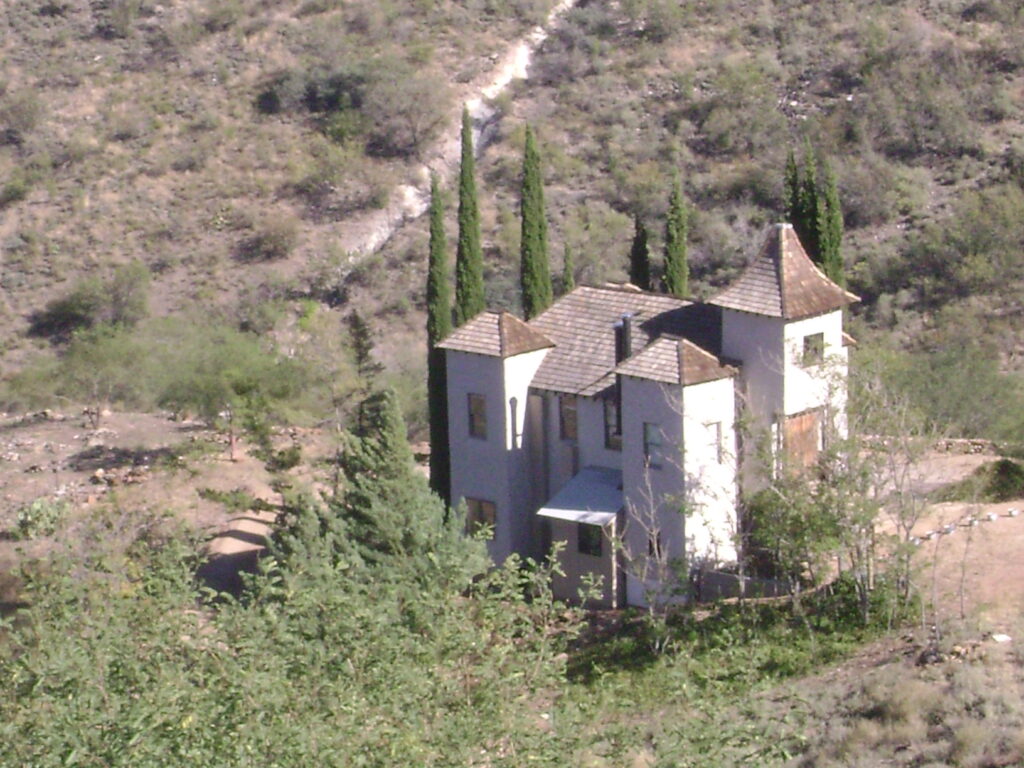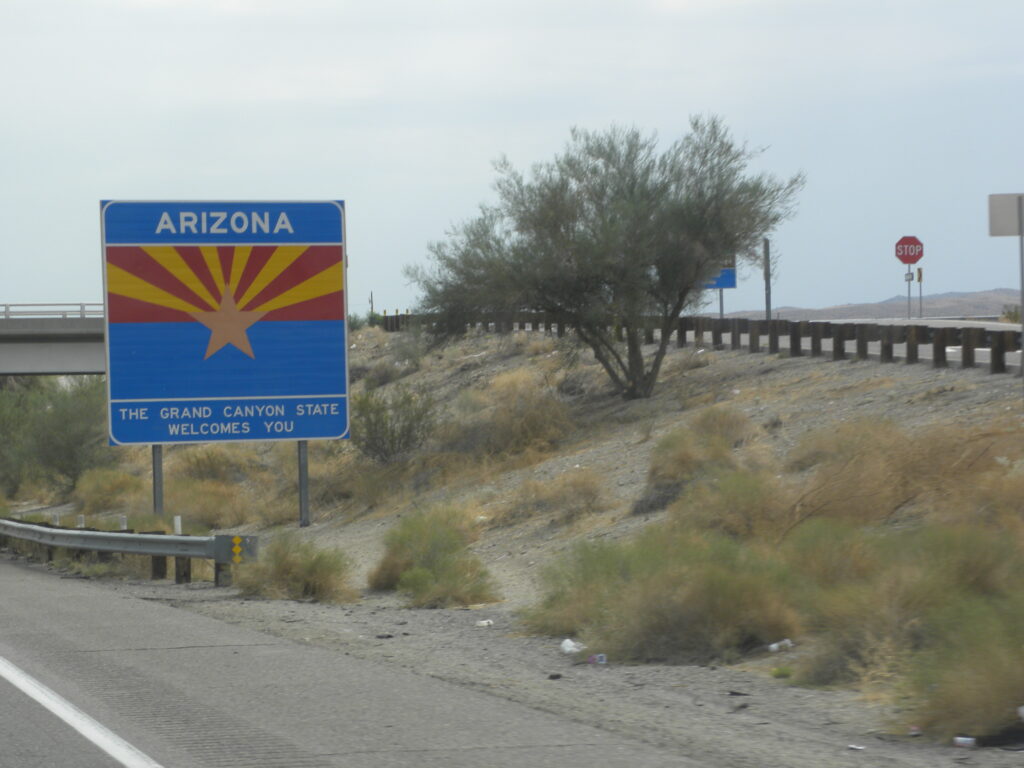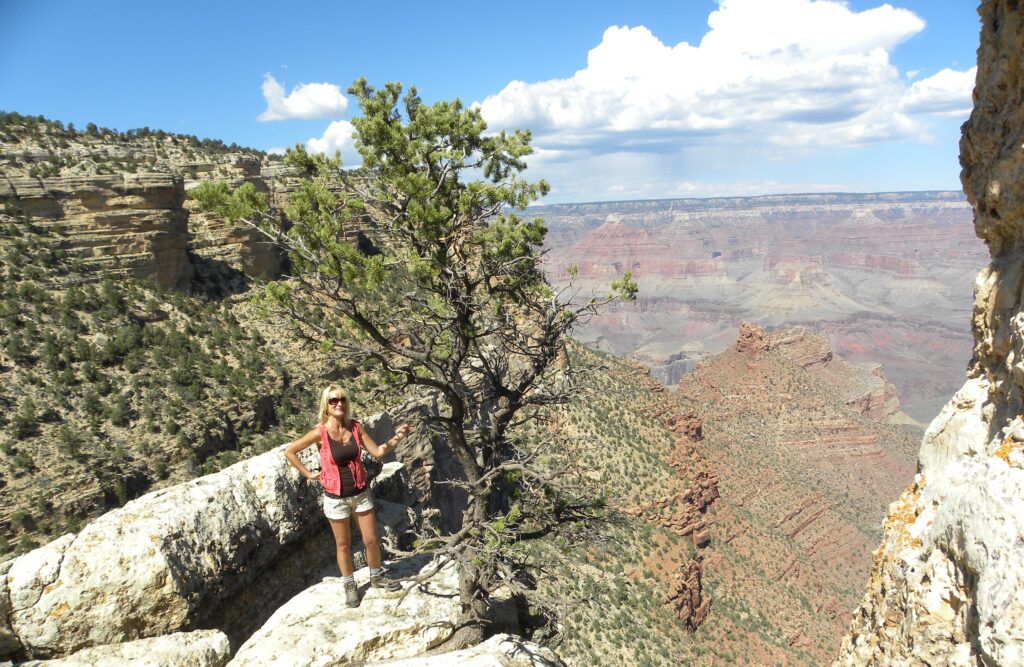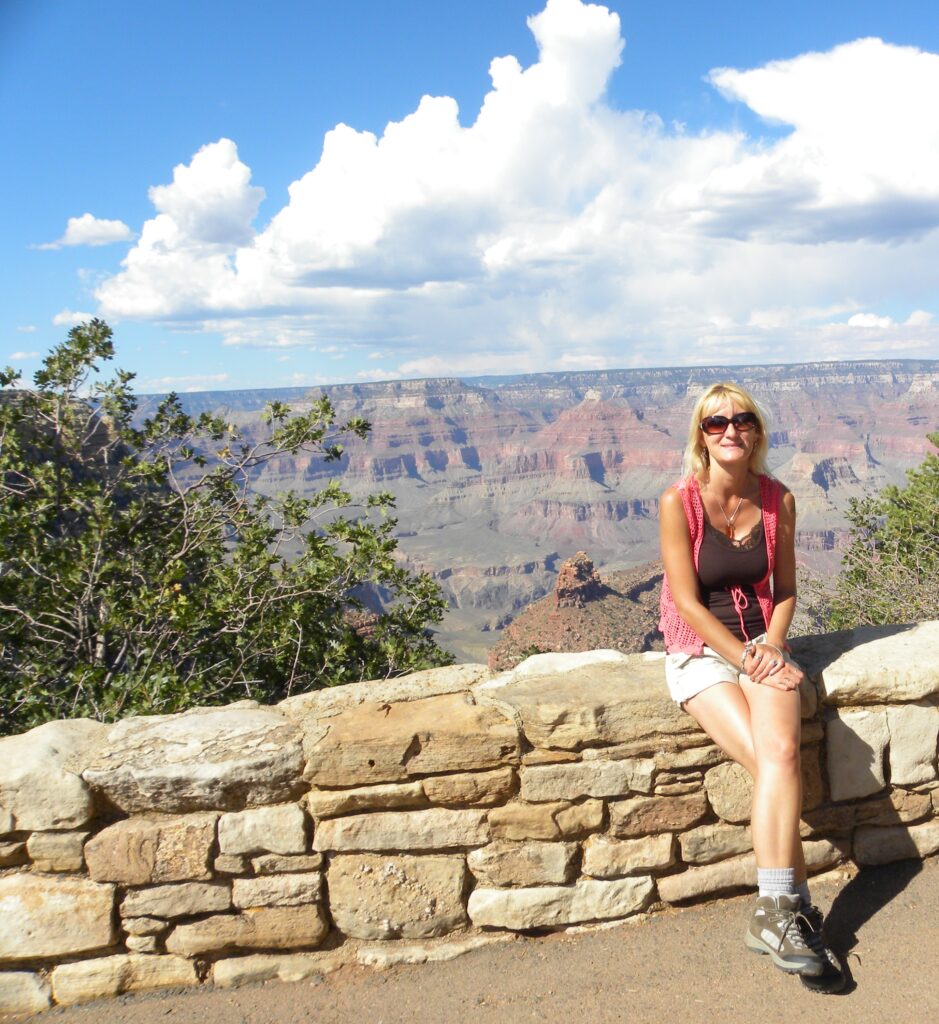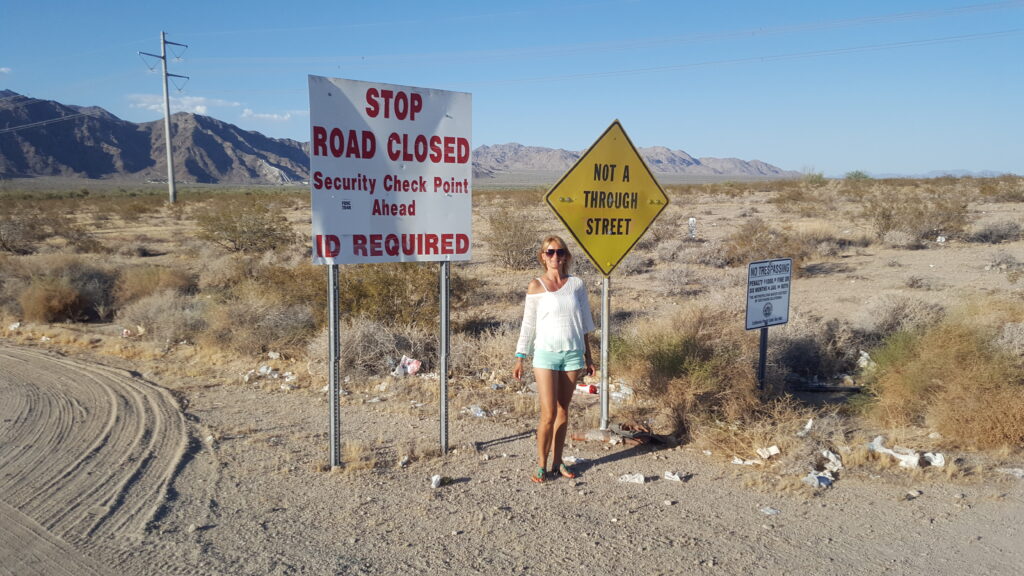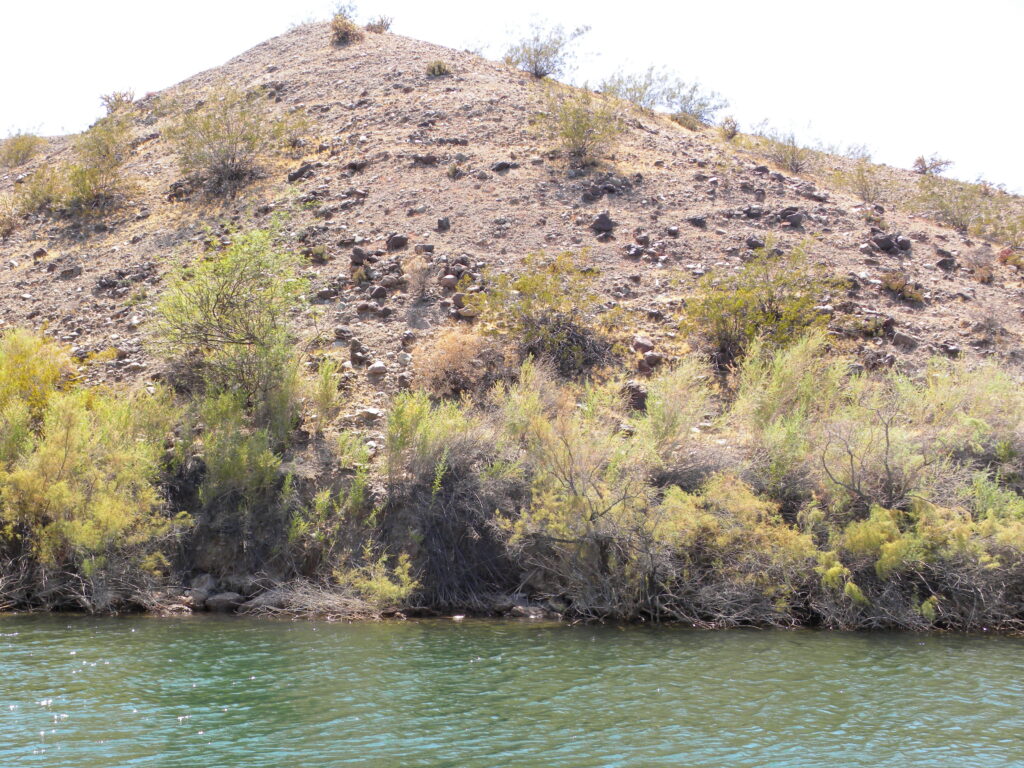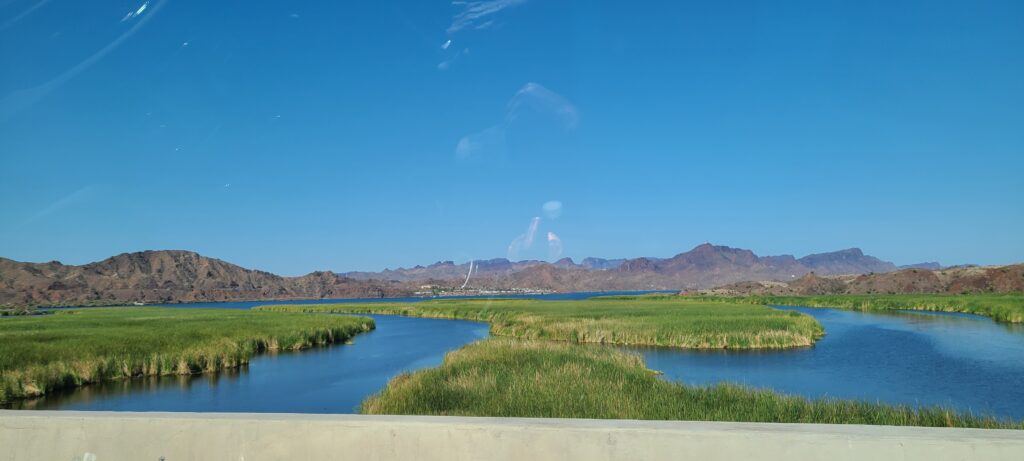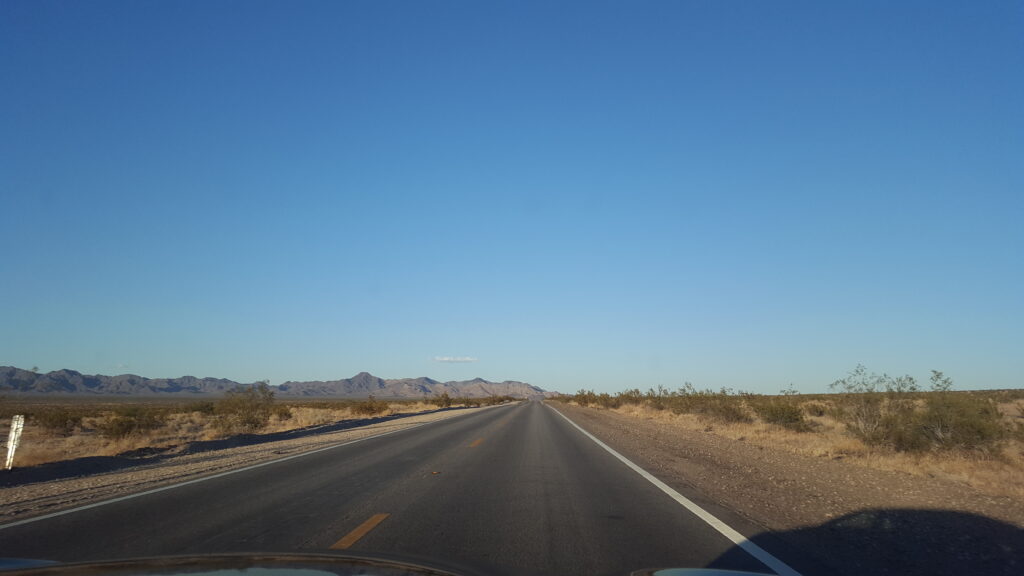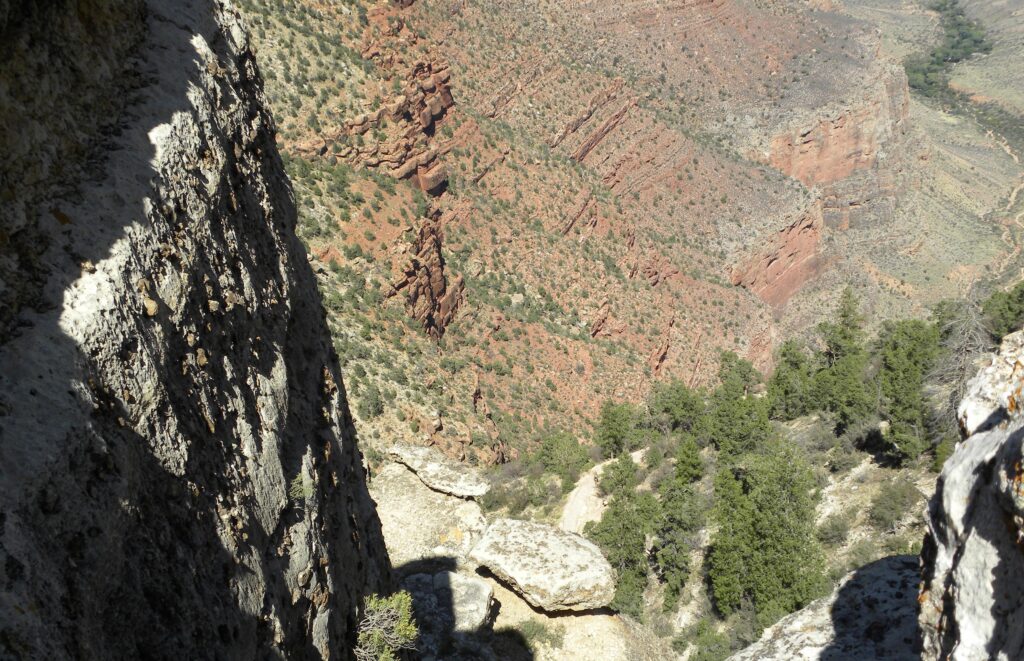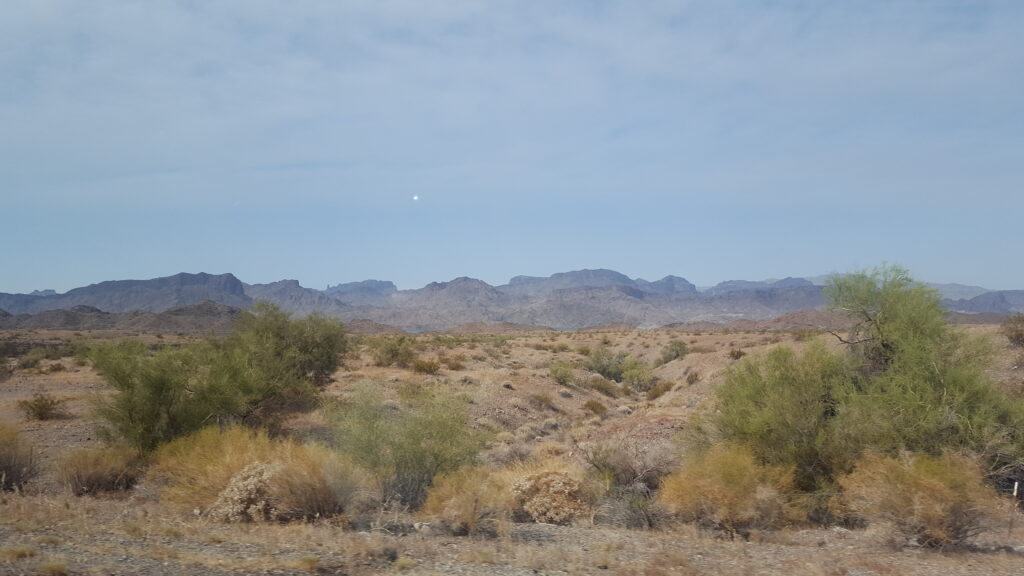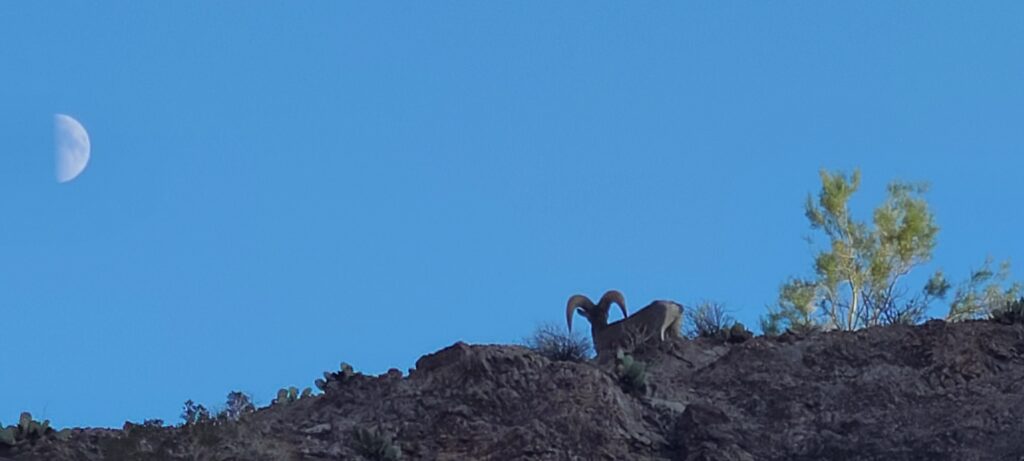Discovering the world / Odkrywając świat, Interesting facts / Ciekawostki, Traveler's guide / Podróznicze porady
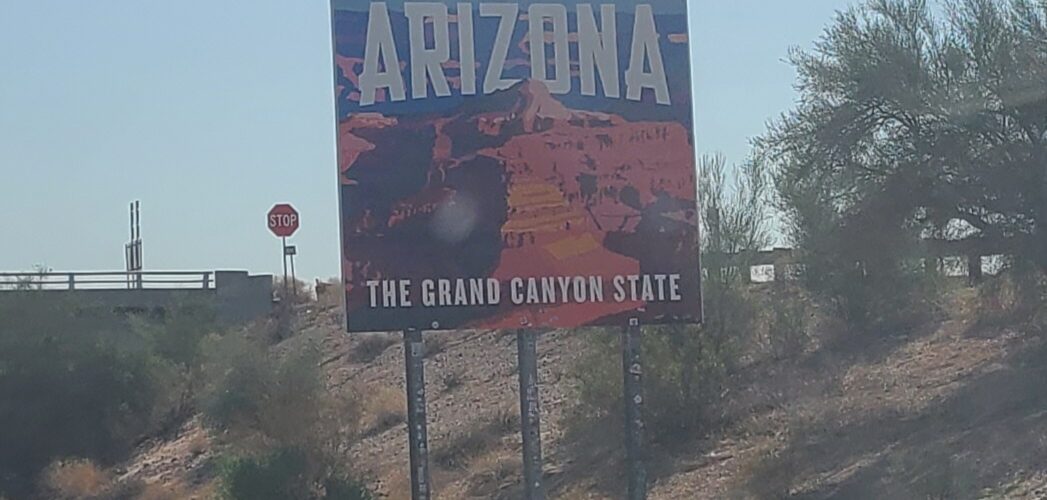
March 20, 2023
United States – Arizona. Part 2 – tourism
Arizona is full of natural wonders, bustling cities and quaint towns. It is a land of desert, lakes, mountains, slot canyons, saguaro cactus, buttes, waterfalls and even a volcano where you can practice downhill skiing. The biggest attraction of the state is the Grand Canyon, which attracts tourists from all over the world. The two most famous cities, Phoenix and Sedona, are great vacation destinations. However, we suggest you venture far beyond the city centers to discover Indian cliffs, remnants of ancient cultures and historic mining ghost towns.
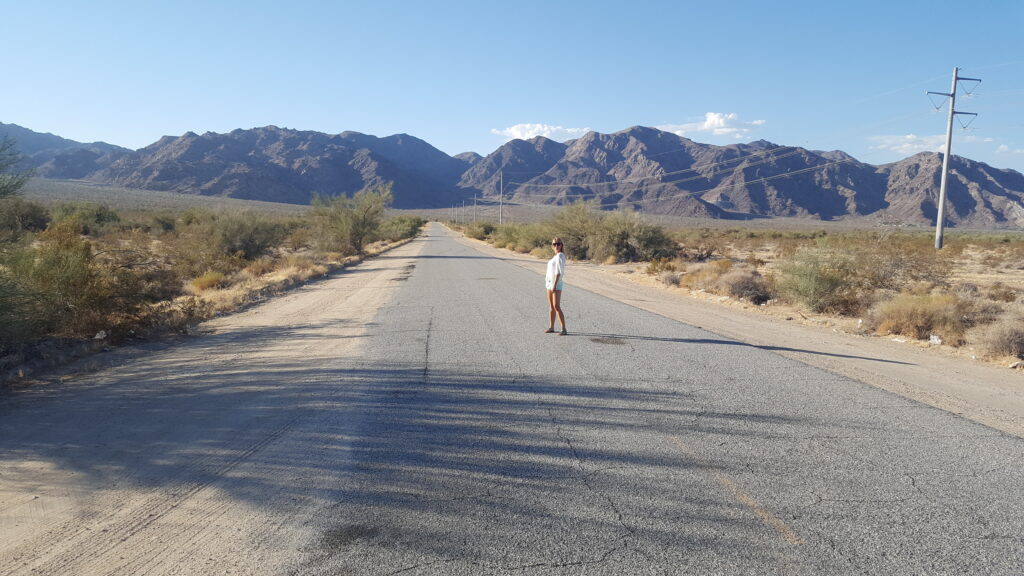
Grand Canyon
One of America’s top tourist attractions. The canyon was carved by the Colorado River and most of it is located in the Grand Canyon National Park in Arizona. Layered bands of red rock reveal millions of years of geological history. Lookouts include Mather Point, the Yavapai Observation Station, and architect Mary Colter’s viewing studio with the Desert View Observation Tower. Lipan Point, with its expansive views of the canyon and Colorado River, is especially popular at sunrise and sunset. Standing on the edge of the Grand Canyon, looking at the endless ridges of colorful cliffs and deep gorges, it is impossible not to admire this natural wonder. The walls of the canyon glow in the late afternoon sun, revealing a riot of colors, shimmering in orange, red and yellow.
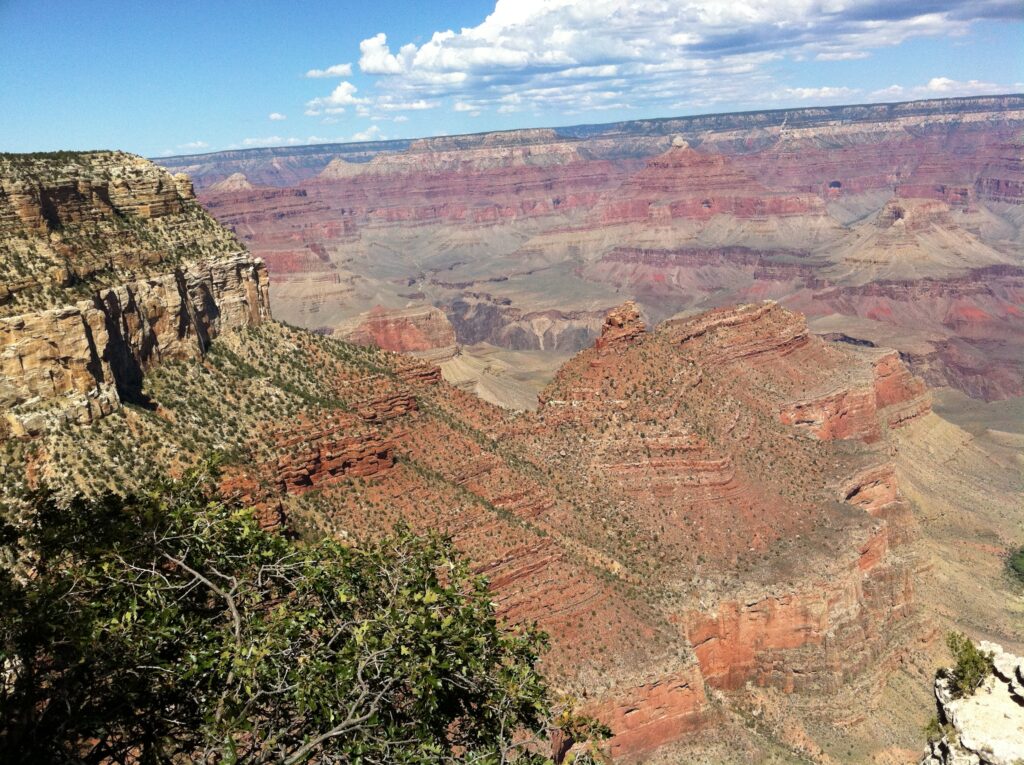
Phoenix
The city is a great base for exploring Arizona, but it’s also a winter destination for golfers and sun-seekers who just want to enjoy a resort or spa stay and spend some time in the hot desert. The Phoenix Metropolitan Area, which is home to Scottsdale and Mesa, has shops, restaurants, golf courses, desert parks, and plenty of hiking and biking opportunities. Top attractions in the area include Frank Lloyd Wright’s Heard Museum and Taliesin West.
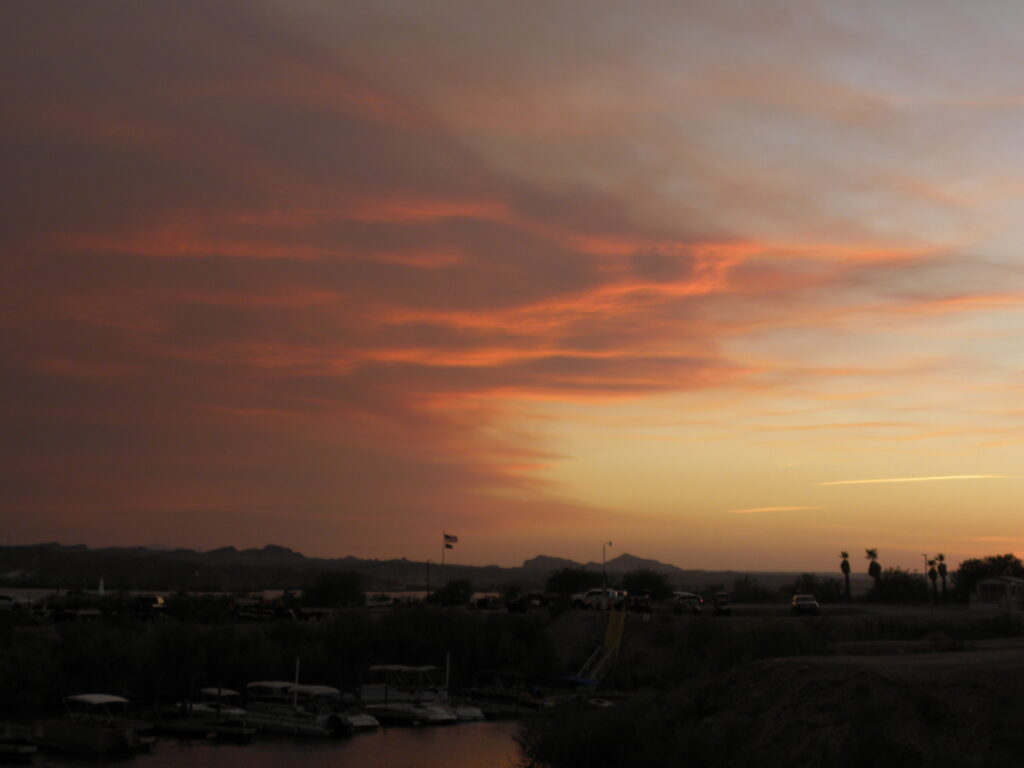
Sedona
Located about a 1.5-hour drive north of Phoenix and surrounded by red mountains and rocks, Sedona is one of the most beautiful places in Arizona. The road to the city from the south, through the Village of Oak Creek, is full of scenic views. The main street (89A) has shops, art galleries and restaurants. There are also New Age shops in the city centre. The area invites you to tour in the footsteps of UFOs and the trails of ancient Indians. There are hiking and biking trails around Sedona. Jeep tours are the best way to explore the area.

Monument Valley
One of the most distinctive features of the southwestern part of the state are the sandstones that dominate Monument Valley. Stretching along the Arizona-Utah border, this area includes jagged rock formations, stone spiers and belts, and sand dunes. At the heart of the valley is Monument Valley Navajo Tribal Park, which has a visitor center and a 17-mile trail through the park.
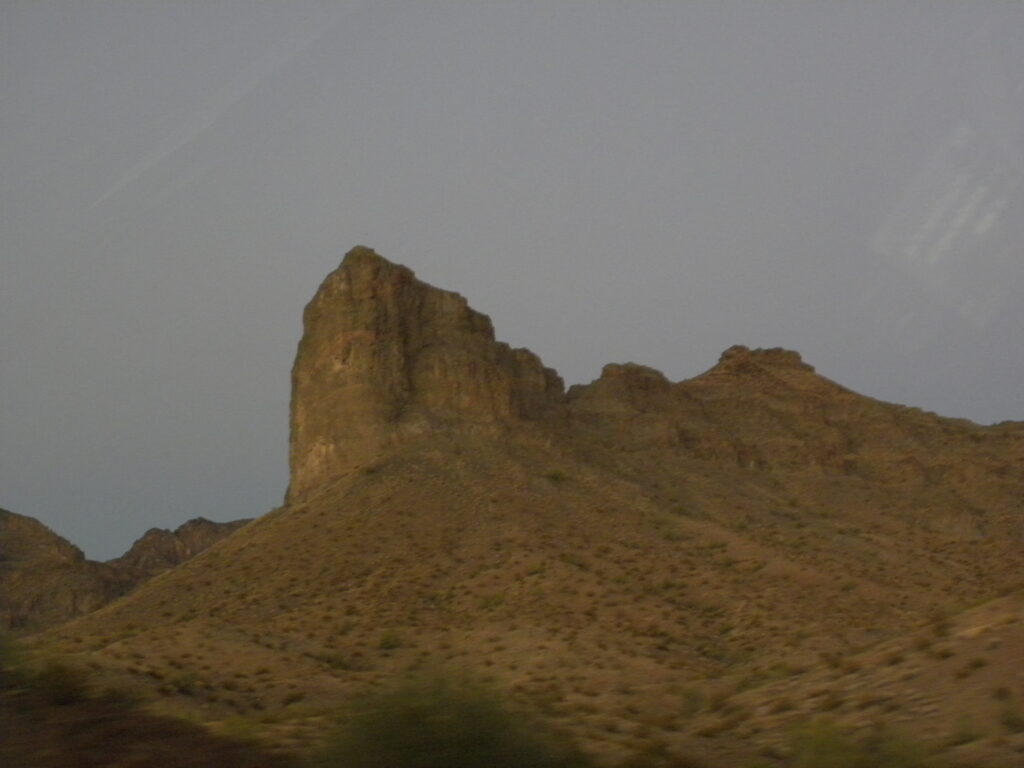
Glen Canyon National Recreation Area
A beautiful region with blue water, desert landscape and stone walls. The Glen Canyon Dam was built between 1956 and 1964 to block the Colorado River and create one of the largest artificial lakes in the United States, Lake Powell.
The town of Page is a good base for exploring Glen Canyon National Recreation and the surrounding area. The largest marina on Lake Powell, Wahweap Marina is 7 miles north of Page. One of the biggest attractions in the area is Antelope Canyon, which can only be visited with a guide.
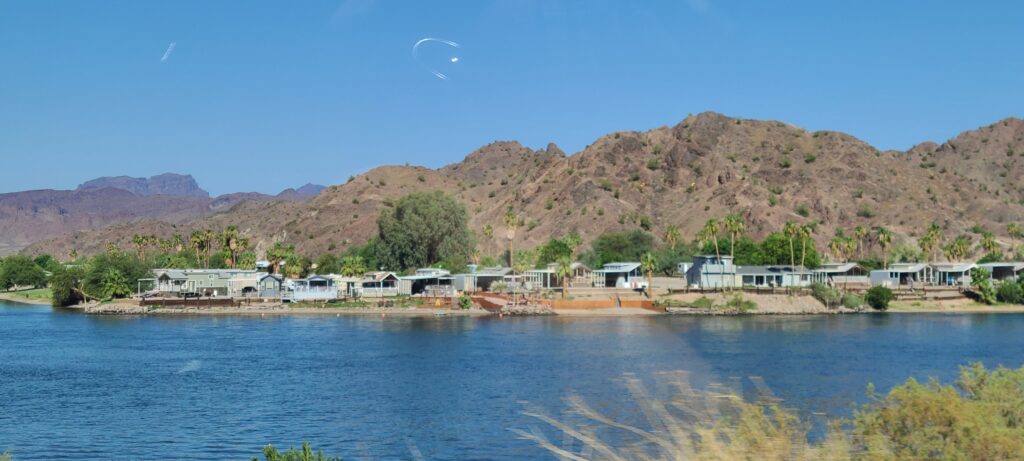
Hoover Dam
The Hoover Dam is one of the world’s greatest engineering marvels. Completed in 1935, this massive structure crosses the Colorado River, connecting Arizona and Nevada. It is 726 feet high and 1,244 feet long. Created by the dam, Lake Mead is the largest man-made lake in the United States. It is 110 miles long and has the equivalent of two years of flow of the Colorado River.
There is a visitor center on site, with information on the dam and tours, and a coffee shop.
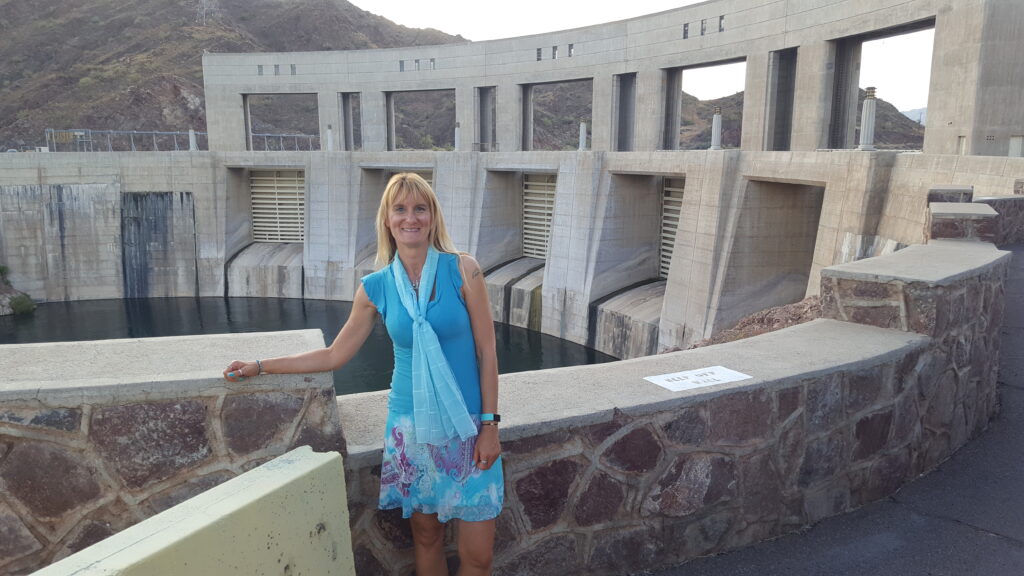
Jerome
Perched high on a hill above the desert, the former mining town is now one of many ghost towns and a tourist attraction. A steep hill with serpentines is the main street of the city, and shops and restaurants await visitors. Many of the old buildings have been renovated, but some are still ruins, which creates a very interesting dynamic. There are motels in Jerome, and you can spend the night there. Learn about the city’s history at the Gold King Mine Museum and Jerome State Historic Park.
The city itself is very unique and has many interesting places to visit. The sliding prison was built around 1928. The Jerome Grand Hotel, built in 1927, is the tallest public building in the Verde Valley and the view from it is breathtaking. The Bartlett Hotel was once one of Jerome’s finest hotels, but is now in ruins.
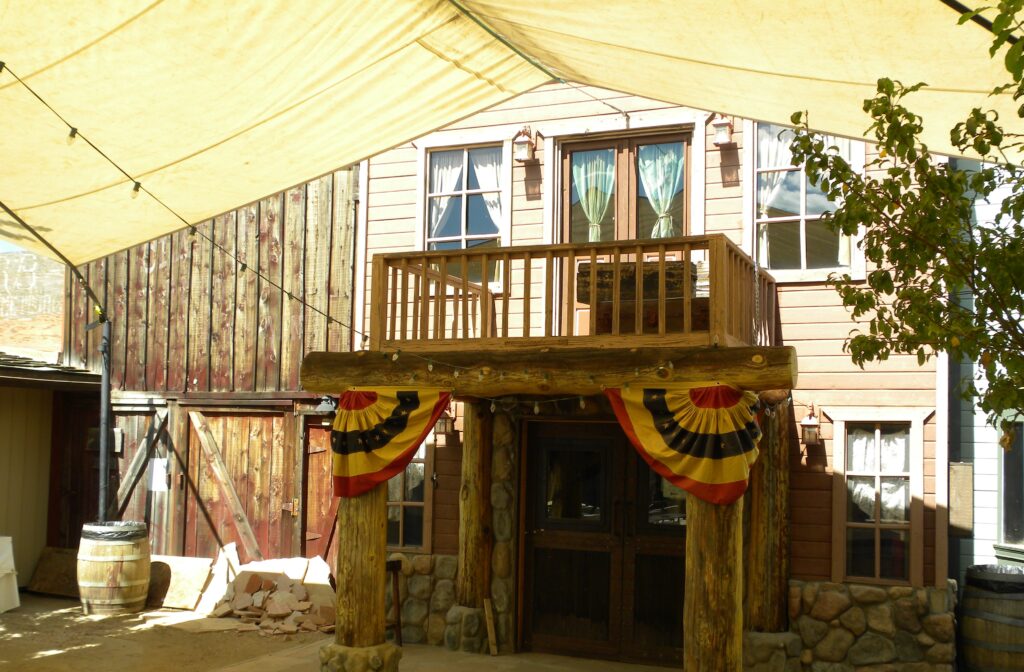
Havasu Falls
The Havasu Valley has numerous waterfalls and pools carved in travertine that form swimming pools. Near Supai, within the Havasupai (“blue-green water people”) Indian Reservation. , is home to the 100-foot Havasu Falls. The pools at the base of Havasu Falls have a bluish-green tint to the water, and the water fall is bifurcated so there appear to be two waterfalls. In the canyon of Havasu Creek, a tributary of the Colorado River, about 450 Havasupai Indians live in a remote area. They make their living from modest farming, trade and tourism.
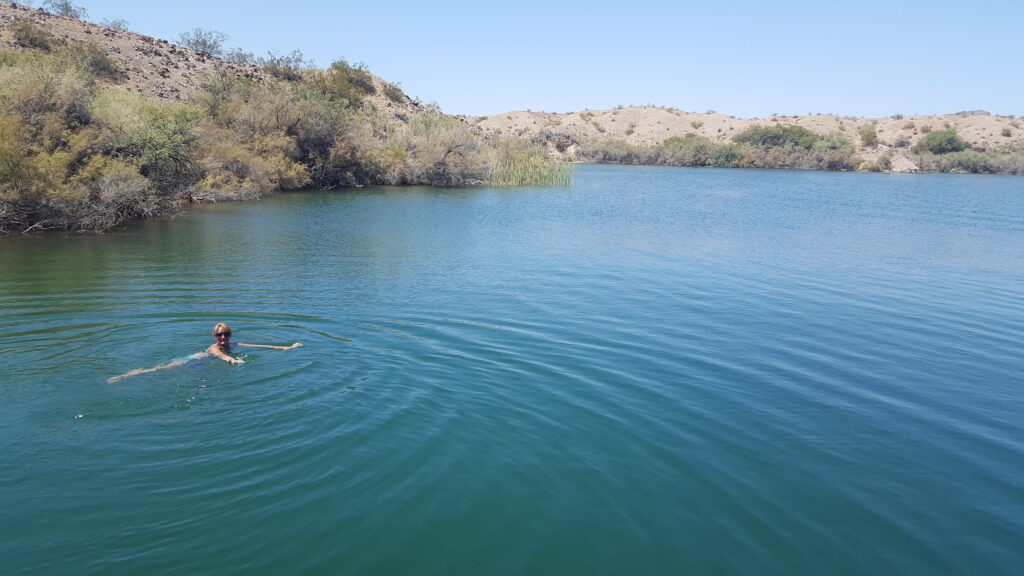
De Chelly Canyon National Monument
Here you can admire the spectacular living quarters of the land’s former inhabitants, perched on cliffs along steep canyons up to 1,000 feet high. In the main canyon are the ruins of the White House, built around 1050 and discovered in 1849, and Spider Rock. The White House is the most famous of over a hundred cliffs. Other cliffs include the Antelope House and the Mummy Cave in Canyon del Muerto. Most of the ruins date from around 350 to 1300 AD.
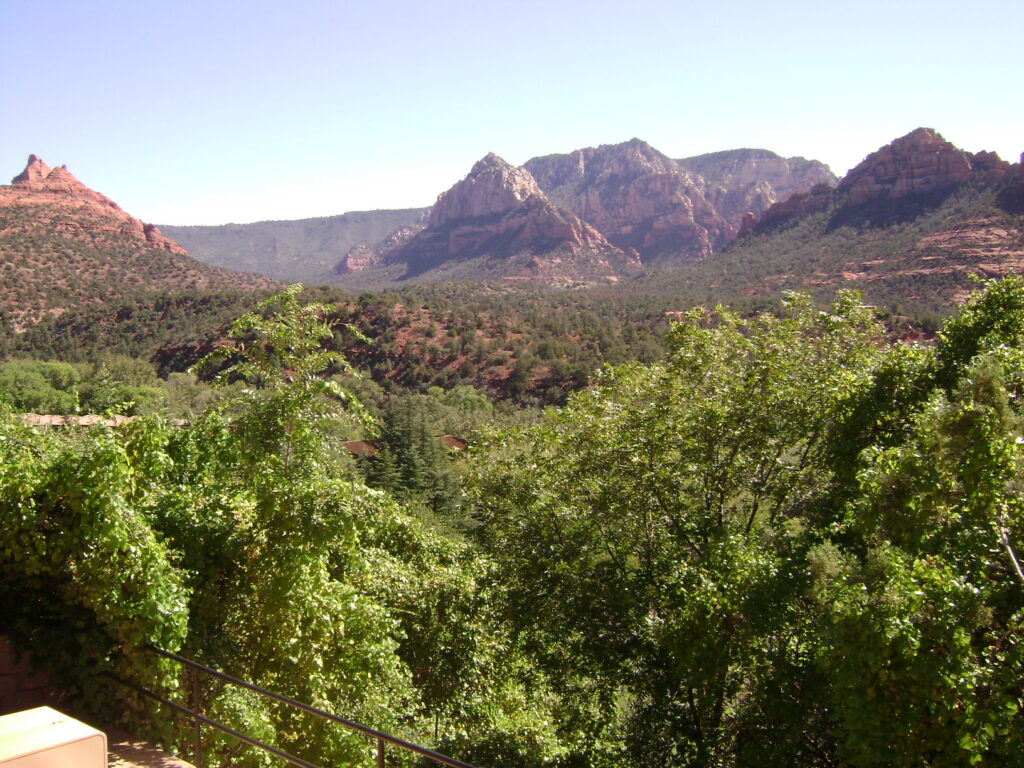
Bisbee
In the far south of Arizona, near the Mexican border, is one of Arizona’s most interesting towns, the former mining town of Bisbee.
After the mine closed, Bisbee became a ghost town and then a haven for artists and hippies. Today it is a thriving tourist town. Homes, many of which are former miners’ cabins, line the hills surrounding the historic center of the city. Many of these residences are only accessible by long stairs leading to the city center. Views from the upper streets and hillside homes stretch across the mountains all the way to Mexico. There are many hiking trails in the hills above the city.
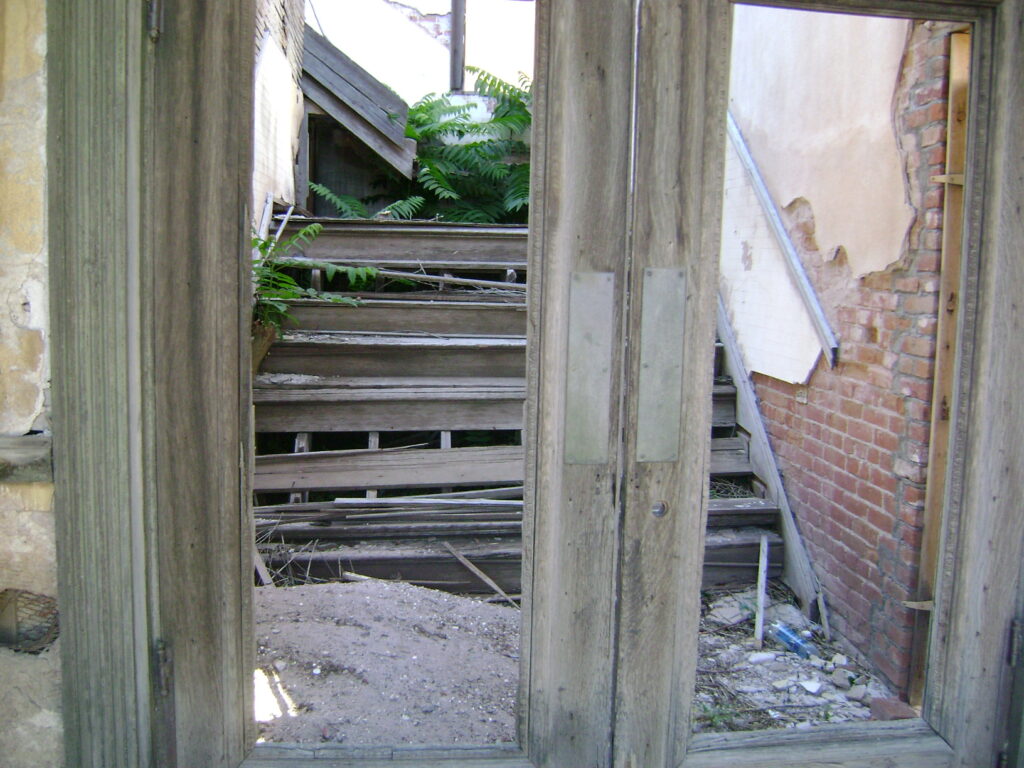
Lake Mead National Recreation Area
Sailing and water sports, fishing and hiking can be enjoyed in the surrounding area. Lake Mohave is an artificial body of water created by the Davis Dam. Willow Beach is a small resort town on the Colorado River.
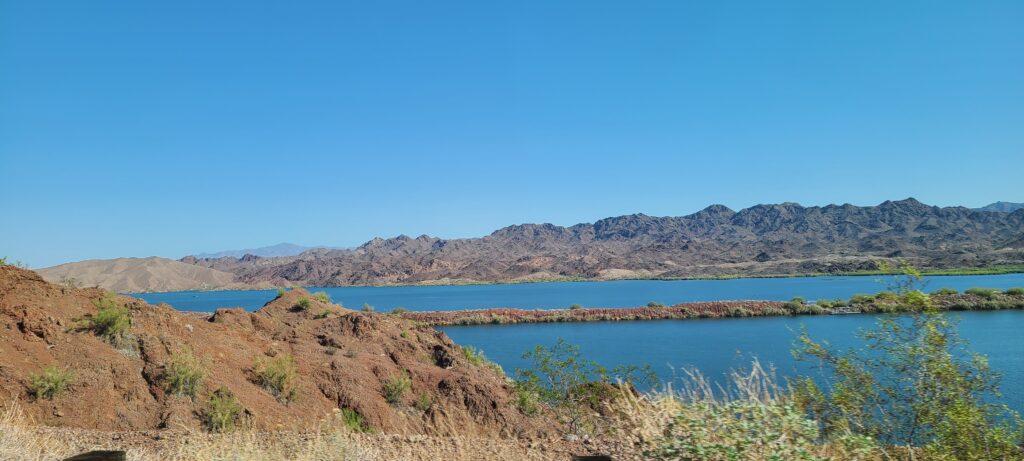
Tombstone
Staged gunfights in the streets and characters walking through the city in period costumes recreate the glory days of this small town. Every shop, restaurant and attraction is designed with tourists in mind. In the city, you can visit some old buildings and historical places, such as the famous O.K. Corral and Boothill Cemetery. Also of note is the Tombstone Courthouse, housed in the original courthouse which is now a museum.
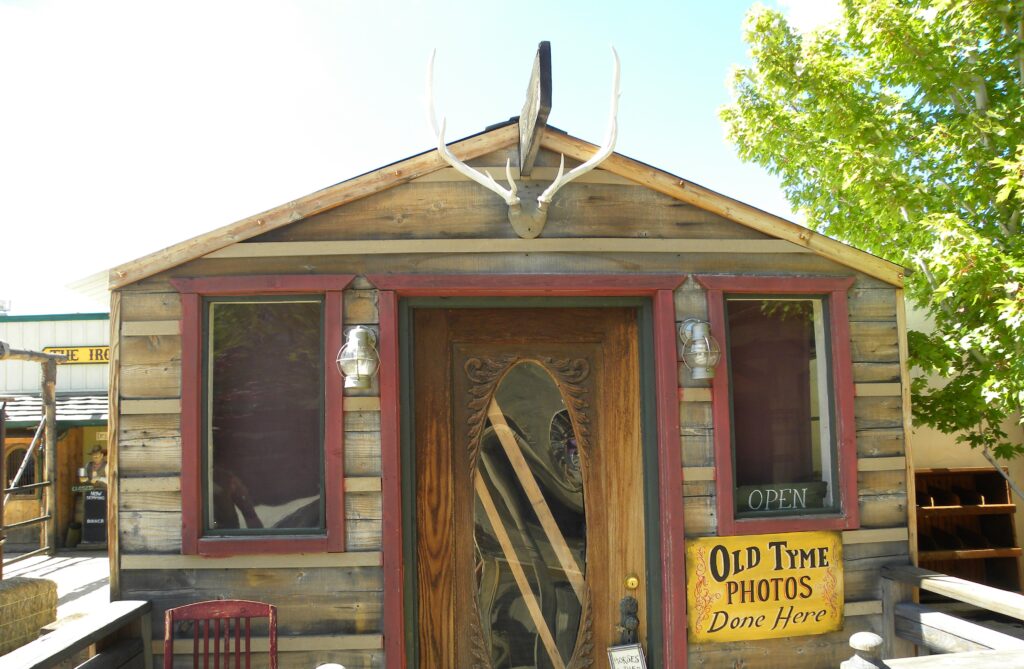
Petrified Forest National Park
Large pieces of petrified wood, as well as petrified plants, fish and reptiles have been found in today’s Petrified Forest Park. The access road to the park allows visitors to pass through many important attractions, and short designated routes allow you to get close to many unique monuments. The visitor center provides a lot of information on the ecology and geology of the park and is a good place to start your visit.
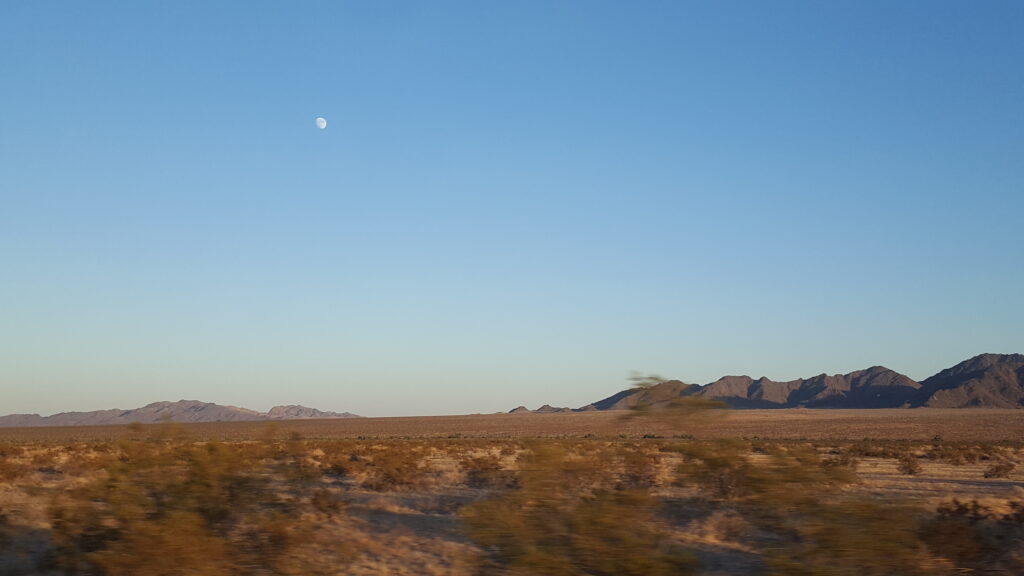
Saguaro National Park
Saguaro National Park is a great place to explore the desert landscape around Tucson and see the famous saguaro cacti up close. The park has two sections, east and west, about 30 minutes apart. In both sections you can admire specimens of desert flora and fauna. Hiking trails range from easy walks to challenging ones leading up to high mountains, reaching up to 8,000 feet in height.
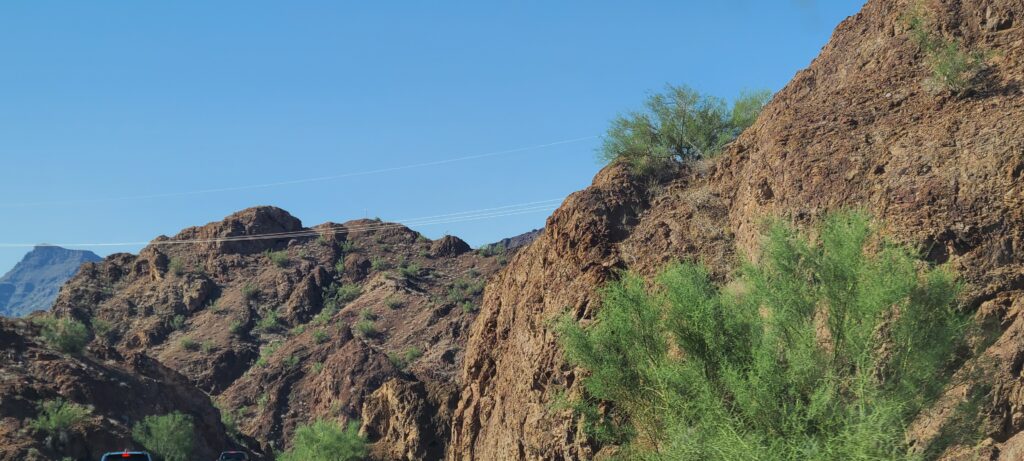
Organ Pipe Cactus National Monument
An international biosphere reserve located in southwestern Arizona on the border with Mexico. The main attraction of this place are three distinct zones of desert vegetation and about 30 different species of cactus. The so-called organ pipes are cacti that grow up to 23 feet tall and bloom from May to July. Due to the extreme heat of the day, the flowers often do not open until after sunset.
The two main scenic routes are Ajo Mountain Drive and Puerto Blanco Drive.
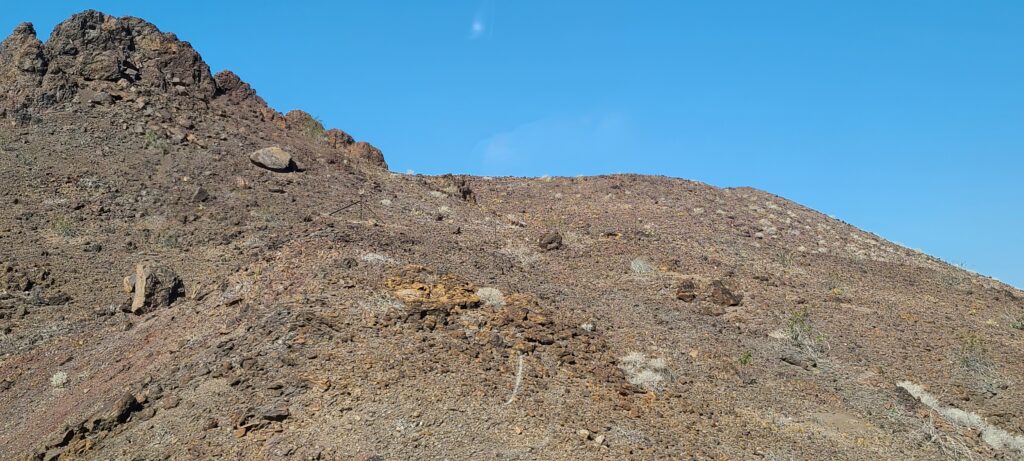
Tumacacori National Historical Park
Located south of Tucson. It includes the ruins of three early Spanish colonial missions. San José de Tumacácori and Los Santos Ángeles de Guevavi, founded in 1691, are the two oldest missions in Arizona. The third mission, San Cayetano de Calabazas, was founded in 1756. The area was abandoned in 1848 due to Apache raids, neglect and a terrible winter. Tumacacori became a National Historic Landmark in 1908, and two Spanish missions, Guevavi and Calabazas, were added to the site in 1990.
